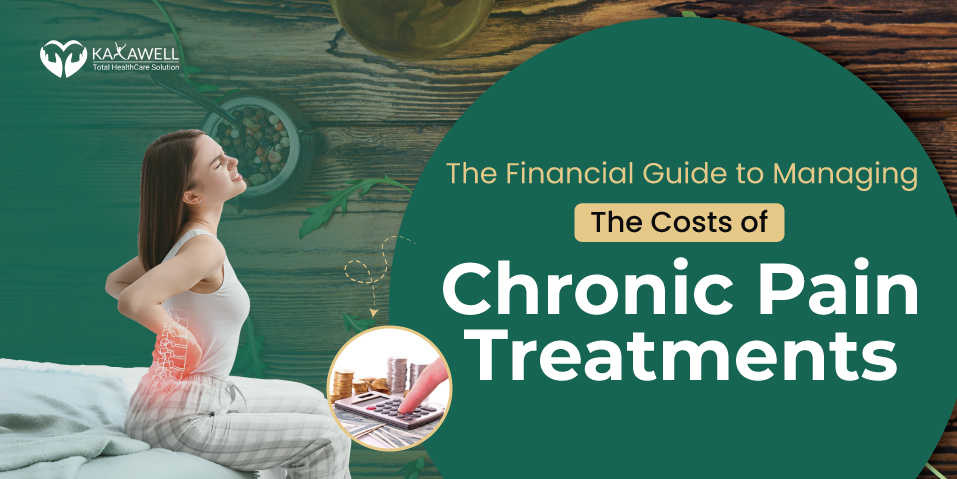The Financial Guide to Managing the Costs of Chronic Pain Treatments
Millions of people worldwide suffer from the social burdens of conditions that leave them with chronic pain. Their circumstances require perpetual and consistent treatment, and many are unable to deal with the financial stress that accompanies this.
The cost of healthcare facilities, from medication and tests to consultations and hospitalization, is skyrocketing. In such scenarios, managing the price attached to an ailment is no mere task.
Managing chronic pain costs can involve the utilization of insurance benefits, seeking affordable care, and exploring various community-based resources for emotional support and financial assistance. Fortunately, there exist some options that provide significant relief.
Let us explore a few of them in this article.
The Costs of Chronic Pain
Treatment for several critical illnesses may put a patient at risk of going bankrupt. Therefore, it makes sense that the costs associated with chronic pain are a vital component to consider.
While sudden illness or injury catches us off guard, chronic pain is associated with a long-lasting medical condition that can linger for months at a time. It can severely impact your daily activities by limiting your mobility and productivity.
It can also adversely affect your sleeping cycle.
To ensure you can live a contented life with this condition, you have to rely on medications and therapies, which can cost a considerable chunk of your monthly income.
Here’s a breakdown of some key cost factors:
- Medications: This includes the price of pain relievers and anti-depressants, which are commonly prescribed for chronic pain patients.
- Treatments: This includes doctor consultation fees, injections, and surgery costs.
- Therapies: Alternative pain relief treatments like acupuncture, yoga, and massages may have improved effects on an individual than conventional treatment. However, even these alternative treatments have costs attached to them.
Read More: Ayurvedic Wellness Rituals For The Modern Lifestyle
For instance, spinal decompression therapy is a non-invasive method to treat chronic conditions such as sciatica, herniated discs, degenerative disc disease, and chronic lower back pain. The spine decompression cost can depend on the patient, the specific spinal issue, and the intensity of the pain.
5 Strategies for Managing Costs
It could be advantageous to look for methods to lower medical costs if you have a condition that requires ongoing care. Here are a few of them:
1. Generic Medications: Medical professionals seldom specify a company when prescribing medications. Medication produced by large companies costs more, so it may be constructive to look for generic alternatives that use the same ingredients and are available at a lower cost.
It is wise to discuss your medical needs and budget limitations with your doctor or pharmacist so that they may suggest suitable treatment plans. Your pharmacist may also recommend brands with discounts you can benefit from.
2. Dosage Optimization: Taking medicine in higher dosages is not always the solution for individuals living with chronic pain. Aim to reduce your medication quantity and frequency with time. Remember that you should perform this in consultation with your doctor.
3. Government Schemes: Although usually busy, government-sponsored clinics and health centers provide consultation and medicines at a significantly lower price. If you can afford to spend some time at these clinics, you stand to save a lot of money.
It is also a good idea to keep an eye out and verify your eligibility for various schemes that offer various healthcare services at nominal fees.
4. Health Insurance: This is possibly the most valuable and practical way to manage your treatment costs. Health insurance policies provide extensive coverage for hospitalization, medications, and outpatient treatments.
However, not all insurance plans are all-inclusive. As a result, if you purchased your plan before you developed chronic pain, you likely have cleared the waiting period and are eligible for the coverage you require.
If you buy a new plan, you must declare your pre-existing condition and complete the waiting period. It is best to discuss the details with your insurer.
Remember, purchasing a plan with a broad scope of coverage will help you identify appropriate treatment plans and the hospital best equipped to provide your care, all while providing cashless services.
Selecting a verified insurer to access the best care is also imperative. Opt for a reputable institution with a high claim settlement ratio and access to an extensive network of hospitals.
5. Non-Governmental Organisations: Several non-profit organizations try to assist people experiencing chronic pain by offering helpful resources such as support groups and financial resources.
Communication with these groups can help patients understand the practical aspects of managing pain and finances. These institutions also provide emotional support by connecting patients facing similar issues.
The Chronic Pain Management Research Program (CPMRP) started in 2019 with $10 million. It funds research on using prescription opioids for chronic pain and explores opioid alternatives and non-addictive treatments, especially for military populations.
Ways to Prevent or Reduce the Pain
While you cannot eliminate your dependency on medicines and treatments, there are low-cost practices you can adopt to manage the pain. Using these alternate practices will aid you in reducing your dependency in the long run. Here are some cost-effective options:
- Exercise: Regular exercise, like yoga or running, can improve pain management.
- Mind-Body Techniques: Techniques like meditation and relaxation therapy have helped many chronic pain patients effectively manage the pain and the stress it causes.
- Heat and Cold Therapy: Applying heat or cold packs to specific areas can relieve temporary pain. This is a quick and accessible practice for those living with chronic pain.
- Acupuncture: This widespread traditional practice has proven helpful for targeted relief and pain management.
- Physical Therapy: Engaging in physical therapy sessions with a trained therapist can help alleviate pain through targeted exercises and treatments designed to improve mobility and strength.
Conclusion
Chronic pain management costs are a considerable financial, mental, and social burden on anyone.
Individuals can effectively manage chronic pain relief expenses through pre-emptive financial planning, auditing medical expenses, focusing on a healthy lifestyle, and applying for financial assistance programs.
Additionally, patients should consult healthcare professionals, patient advocacy groups, insurance providers, and financial advisors regularly to find effective alternative cures for their conditions.



